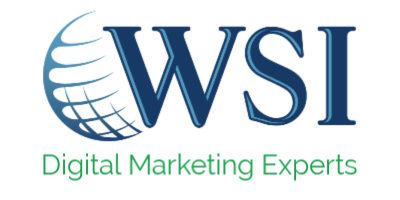- HOME
- ABOUT US
- SERVICES
- CUSTOMER STORIES
- OUR EXPERTS
- CONTACT US
- BLOG
In need of some sound digital marketing advice?
Book a free consultation with one of our experts.

Making a difference in our clients’ lives
We positively impact the lives of our clients beyond their KPI reports.
Blog Layout
As you explore the world of social media marketing for your business, I'm sure the debate of Instagram vs. Facebook, among other questions, has crossed your mind. Things like, "Which platforms should I use?" and "How do I know which social media platform is right for my business?"
Before you get ahead of yourself and leap onto one or multiple social media platforms for your business, it's critical to establish your business' marketing goals first. If you don't have set goals and objectives for your marketing strategy, it's a lot harder to achieve social media success.
In this blog post, we will look at Facebook and Instagram and which social media platforms are right for your business.
Now, you may be thinking, "Oh, nobody uses Facebook anymore. The only people on Facebook are my parents and their friends, showing off pictures from the cruise they went on last summer. So, of course, Instagram is the way to go, right?" or "All the millennials are on Instagram, so I totally should choose Instagram for my business."
Before jumping to these conclusions, let's examine this Facebook or Instagram debate. We will be exploring the strengths and weaknesses of both platforms from a business standpoint and how you can determine which platform suits your needs. Chances are you may be able to implement both platforms into your business's marketing strategy. However, it is entirely okay to choose one over the other.
I'm not here to tell you that one platform is better than the other. I will let you decide which platform is right for your business once you've reached the end of this post.
Facebook currently has over 2 billion monthly active users, and there's no doubt that more and more businesses are considering Facebook for their business marketing efforts. With such an endless audience to market to, Facebook is a platform that many Facebook users strive to be present on, as it's probably one of the top social media platforms for business.
Facebook Marketing Strengths
Facebook marketing is a powerful tool that can help businesses of all sizes achieve their marketing goals. It offers several strengths, including:
Increased Brand Awareness
Looking to build your social media presence? Look no further because increased brand awareness is one of the many benefits of choosing Facebook for your business. Facebook can help you build your brand loyalty. With the number of active users on this platform being over 2 billion, the opportunities to reach a wider audience are endless. As a result, more brand awareness means more (potential) customers!
Efficient Communication Channel
In any relationship, communication is critical. Whether it be with your significant other, family, friends, coworkers, you name it. As a business, building a solid relationship with your customer base is no different. Ideally, you also want to understand why your customers want to chat and how it can change your business. Luckily, Facebook is an efficient channel of communication. It is an excellent platform to post announcements and engage with your customer base. Many businesses even look to Facebook as an interactive platform for customer service.
Effective Targeting
Another unique feature of Facebook for business is that it allows you to target specific demographics. This is particularly useful when you're setting up targeted ads or if you're considering boosting your Facebook posts. If you want to grow your following and reach a broader customer base, Facebook allows you to set specific parameters and target by region, gender, age, social activity, and pretty much anything else you can think of!
Drives Website Traffic
Savvy social media marketers will most likely use Facebook to drive traffic to their websites. This is another strength of choosing Facebook for your business. It is easy to include links on posts because Facebook's full-width thumbnails have a high likelihood of being clicked. As a result, you can easily link to blog posts, articles, and other pages from your website.
Market Research and Facebook Insights
Facebook is also an excellent platform for conducting market research. Interested in seeing how you're performing against your competitors? You can easily see what your competitors are up to on Facebook and tailor your social media marketing strategy to maintain a competitive edge. Facebook Page Insights also comes in handy when conducting market research because it is an effective tool for gathering information on your page viewers. This gives you a better understanding of the demographic you are reaching.
Facebook Weaknesses
Facebook has encountered various criticisms and challenges that highlight its weaknesses. These include:
Time and Resources
Setting up a Facebook page for your business takes time. At the beginning stages, you can't expect people to like or follow your page right away. Keep in mind that you get what you put into it. With that being said, maintaining your business' Facebook page also takes time. It's not as simple as you think, and you must consider that whoever manages your Facebook pages is knowledgeable about the platform. You might need to consider hiring someone with the experience to drive your marketing efforts forward on Facebook.
Budget
If you want to make the most of Facebook for your business and take your social media marketing to the next level, setting aside an allocated budget to spend on Facebook advertisements is critical. Understanding why Facebook ads should be part of your marketing strategy is also important. However, it may not be feasible for some businesses because not everyone can afford to spend money on social media.
Dealing With Negative Feedback
We can not expect to win everyone over, just like in our daily lives. There will be instances where you'll have to deal with negative feedback on Facebook. People may criticize you and disagree with you. In these situations, maintaining a degree of professionalism is crucial.
Content Moderation Issues
Facebook has struggled to effectively moderate content on its platform, leading to the spread of hate speech, violent content, and other harmful material. This has raised concerns about the platform's impact on user safety and societal well-being.
Misinformation and Fake News
Facebook has been criticized for its role in the spread of misinformation and fake news. The platform's algorithms can amplify false content, contributing to the spread of disinformation and polarization.
Addressing these weaknesses is crucial for Facebook to maintain its competitive edge and regain user trust. The company needs to implement more robust privacy protections, diversify its revenue streams, improve content moderation, and work to restore its reputation.
How does AI help Facebook with its strengths and weaknesses?
AI (Artificial Intelligence) has the potential to play a significant role in addressing both the strengths and weaknesses of Facebook.
AI-Powered Strengths
- Enhanced Targeting: AI algorithms can analyze vast amounts of user data to identify patterns and insights that inform more precise targeting. This can help Facebook deliver ads to the right people at the right time, increasing the effectiveness of advertising campaigns.
- Content Curation: AI can assist in curating and recommending content to users based on their interests and preferences. This can improve user engagement, increase time spent on the platform, and reduce user frustration from irrelevant or low-quality content.
- Misinformation Detection: AI can be used to identify and flag potentially false or misleading content, aiding in the fight against misinformation and fake news. This can help maintain the platform's integrity and protect users from harmful information.
- Personalized Experiences: AI can personalize the user experience by tailoring features, recommendations, and content to each individual user's preferences. This can enhance user satisfaction and loyalty.
- Automated Moderation: AI algorithms can help automate content moderation tasks, such as identifying and removing harmful content or violating community guidelines. This can improve the efficiency and effectiveness of content moderation efforts.
AI-Related Challenges
- Algorithmic Bias: AI algorithms can inherit biases from the data they are trained on, potentially leading to discriminatory or unfair outcomes. Facebook needs to carefully monitor and mitigate algorithmic bias to ensure fair and equitable treatment of all users.
- Privacy Concerns: Using AI in data analysis and advertising can raise privacy concerns. Facebook must implement robust privacy protections and transparent data practices to maintain user trust.
- Over-Reliance on AI: Over-reliance on AI can lead to a lack of human oversight and accountability. Facebook needs to strike a balance between leveraging AI's capabilities and maintaining human control over critical decisions.
- Explainability and Transparency: AI algorithms can be complex and opaque, making it difficult to understand how they make decisions. Facebook needs to make its AI systems more explainable and transparent to build user trust and address concerns about fairness.
- Ethical Considerations: Using AI in social media raises various ethical considerations, such as the potential for manipulation, addiction, and social isolation. Facebook must engage in open dialogue with stakeholders and experts to address these ethical concerns responsibly.
By effectively utilizing AI, Facebook can enhance its strengths and address its weaknesses, improving the user experience, protecting user privacy, and maintaining a responsible and ethical approach to social media.
It's wild to see how much Instagram has evolved over the past few years. More and more businesses are exploring Instagram as a medium to expand their social media marketing efforts. Instagram launched its Business Account in 2016, providing business users with tools to help understand their current and prospective customers. According to Instagram, there are over 25 million business profiles worldwide, and I feel this number will continue to rise. Moreover, over 2 million advertisers now use their Instagram accounts to share their stories and drive their business results.
Instagram Marketing Strengths
Instagram marketing is a powerful tool that can help businesses of all sizes achieve their marketing goals. It offers a number of strengths, including:
Visuals, Visuals, Visuals!
Instagram is strictly a visual platform, which is one of the strengths that separates Instagram from other social media platforms. Instagram consists solely of visual content like photos and videos, providing opportunities to ignite your marketing campaigns. Video content, especially, is becoming increasingly popular on Instagram right now - so popular that there has been an 80% increase in the time spent watching video content on Instagram. Ultimately, this platform provides a highly visual experience for its social media users.
Increased Brand Awareness
Similar to Facebook, Instagram helps businesses increase their brand awareness. The use of hashtags is extremely popular and is one of the driving forces for businesses and brands looking to be discovered by a wider audience. There's no doubt that Instagram has undergone many updates and launched new features one after another in recent years. Features such as Instagram Stories, IGTV, and now Reels give businesses more opportunities to promote their brand, product, or service.
Collaborate With Influencers
Instagram has become a hub for influencers seeking collaboration opportunities with brands and businesses. As the number of influencers that use Instagram continues to grow, businesses should take this as an opportunity to increase their brand exposure. Many businesses, such as beauty and fitness brands, are already hopping on this trend.
Massive Reach
Instagram has over 2 billion active users, making it the most popular social media platform for Gen Z and Millennials. This vast reach allows businesses to connect with a massive audience of potential customers.
Measurable Results
Instagram provides businesses with comprehensive data on the performance of their posts and ads. This data can be used to track progress, identify areas for improvement, and optimize campaigns for maximum impact.
Instagram Weaknesses
Despite its massive popularity and effectiveness as a marketing tool, Instagram does have some weaknesses that users and businesses should be aware of:
Instagram Algorithm
Instagram's changing algorithm has caused many mixed feelings over the past few years. "Why are my posts not showing up on some users' feeds?" Remember when the posts on your Instagram feed appeared in reverse chronological order? This is one of the main challenges you may face if you adapt this social media platform for your business. Every time the algorithm changes, you must reevaluate and alter your existing Instagram strategy (e.g., when to post).
Difficult to Drive Traffic to Website
Unlike Facebook, driving traffic to your website using a social media platform like Instagram is a little more challenging. While you can easily directly link to different web pages with each Facebook post, Instagram has not yet reached the stage where they've enabled clickable links for their posts. Besides the "swipe up" option for Instagram stories and the link in your bio, businesses cannot use clickable links in their posts. If you include a link, Instagram users must copy and paste the URL into their web browser.
Targeting Specific Audiences May Be Difficult
Instagram is a social platform mainly dominated by a younger demographic, typically millennials or Generation Z. Although there are older users on Instagram, it may be worth considering if Instagram is worth the investment for your business if your target audience is much older. Because chances are, they might not even have Instagram.
Limited Features
Instagram has a limited number of features compared to other social media platforms. This can make it difficult for businesses to achieve their marketing goals, as they may be unable to use all the features they need to reach their target audience.
Fake Accounts and Spam
Instagram has a problem with fake accounts and spam, making it difficult for businesses to reach their target audience. This can also make it difficult for businesses to measure the success of their marketing campaigns.
Cyberbullying and Harassment
Instagram has been criticized for being a platform where cyberbullying and harassment can occur. This can be a serious problem for users, particularly young people, and can have a negative impact on their mental health.
Overall, Instagram is a powerful marketing tool that can be very effective for businesses. However, it is essential to be aware of its weaknesses so that you can take steps to mitigate them.
What role can AI play in helping Instagram's strengths and weaknesses?
AI-Powered Strengths
- Enhanced Targeting and Personalization: AI algorithms can analyze vast amounts of user data to identify patterns and insights that inform more precise targeting and personalization of content. This can help Instagram deliver ads and content to the right people at the right time, increasing the effectiveness of advertising campaigns and user engagement.
- Improved Image and Video Recognition: AI can enhance Instagram's image and video recognition capabilities. This can be used to more accurately categorize and tag content, making it easier for users to find relevant content.
- Creative Content Generation: AI can assist in generating creative content, such as captions, hashtags, and even images, helping businesses and individuals create more engaging and compelling content.
- Automated Moderation: AI can help automate content moderation tasks, such as identifying and removing harmful content or violating community guidelines. This can help make the platform safer for users.
- Real-Time Insights and Analytics: AI can provide real-time insights and analytics on user behavior, content performance, and ad effectiveness. This can help businesses and individuals make more informed decisions about their content and marketing strategies.
AI-Related Challenges
- Algorithmic Bias: AI algorithms can inherit biases from the data they are trained on, potentially leading to discriminatory or unfair outcomes. Instagram needs to carefully monitor and mitigate algorithmic bias to ensure fair and equitable treatment of all users.
- Privacy Concerns: The use of AI in data analysis and targeting can raise privacy concerns. Instagram must implement robust privacy protections and transparent data practices to maintain user trust.
- Over-Reliance on AI: Over-reliance on AI can lead to a lack of human oversight and accountability. Instagram needs to strike a balance between leveraging AI's capabilities and maintaining human control over critical decisions.
- Explainability and Transparency: AI algorithms can be complex and opaque, making it difficult to understand how they make decisions. Instagram needs to make its AI systems more explainable and transparent to build user trust and address concerns about fairness.
- Ethical Considerations: The use of AI in social media raises various ethical considerations, such as the potential for manipulation, addiction, and social isolation. Instagram must engage in open dialogue with stakeholders and experts to address these ethical concerns responsibly.
By effectively utilizing AI, Instagram can enhance its strengths, address its weaknesses, and improve the user experience while maintaining a responsible and ethical approach to social media.
Instagram vs Facebook: Making the Right Choice for Your Business Strategy
At the end of the day, when considering Instagram vs Facebook, neither platform is better than the other. Both Instagram and Facebook have strengths and weaknesses. Ultimately, it all comes down to which of the two platforms you think best aligns with your marketing strategy and business objectives and goals. If you're having difficulty deciding how to enter the world of social media or which platforms to use, we'd love to discuss your social media marketing strategy with you.
The Best Digital Marketing Insight and Advice
The WSI Digital Marketing Blog is your go-to-place to get tips, tricks and best practices on all things digital marketing related. Check out our latest posts.
Subscribe Blog
Thank you for contacting us.
We will get back to you as soon as possible.
We will get back to you as soon as possible.
Oops, there was an error sending your message.
Please try again later.
Please try again later.
*You may unsubscribe from digital communications at anytime using the link provided in WSI emails.
For information on our privacy practices and commitment to protecting your privacy, check out our Privacy Policy and Cookie Policy.
For information on our privacy practices and commitment to protecting your privacy, check out our Privacy Policy and Cookie Policy.
Don't stop the learning now!
Here are some other blog posts you may be interested in.

By WSI Team
•
July 24, 2025
Your website is more than a digital brochure. It’s your best salesperson. Your 24/7 storefront. Your credibility check. For both business owners focused on ROI and marketing heads managing budgets, a great website isn’t about bells and whistles—it’s about results. So, what separates a “nice-looking” site from one that actually grows your business? Below are seven must-have features for a high-performing, high-converting website—each practical, scalable, and budget-conscious. 1️⃣ Clarity-First Homepage Confused visitors don’t convert, and first impressions can form in seconds. A great website should speak clearly about what you offer, who it's for, and what they should do next. Long sentences and huge blocks of text create a huge cognitive load for the reader. This is especially true if they’re reading on a small screen like a cell phone! So… Write. Then, take what you’ve written and rewrite. Then, take what you’ve rewritten and shorten it. Into shorter sentences. And then shorter. This makes your marketing messages have better results. Shorter sentences test better! Essentials: A headline that communicates value instantly Subheadline that supports your promise Clear primary CTA ("Get a Quote", "Book a Call") No jargon, no fluff Write shorter sentences For budget-conscious teams: Start with just one strong headline and one CTA above the fold. More clarity, less clutter. Write shorter sentences for the most impact. 2️⃣ Mobile Optimization More than 60% of web traffic originates from mobile devices. If your site loads slowly or looks broken on a phone, you're losing leads. Mobile-first design isn’t a luxury: it’s table stakes. Priorities: Fast website load times (under 3 seconds) Responsive layout (no pinching or zooming) Clickable buttons, readable fonts You must follow the lean approach: use a clean, mobile-friendly template and compress images. Something with a huge visual impact, minimal investment. 3️⃣ Clear Navigation Website visitors need intuitive paths to follow. No guessing—keep it simple, clear, and quick. Don’t make the user think too much. It should be clear within seconds of a quick glance what action you want the user to take. Include: A simplified top menu (5–7 key items max) Descriptive labels ("Our Services" or "Solutions") A sticky header for easy access on scroll Visualize it like a sales funnel: each click moves the visitor closer to contact or conversion. 4️⃣ Compelling Messaging + Copy Most people don’t initially read your copy word-for-word. At first, they glance, skim, and scan your copy for devices that catch their attention, such as headlines, subheadlines, bullets, lists, bold, italics, underlines, and so much more. Then, once you have their attention, and only AFTER you have their attention, do they actually read your copy for the most part. Great design pulls them in. Great copy keeps them there. Messaging connects your service to their problem. Copy moves them to act. Tips: Speak to the customer’s pain points and desired outcomes Use headlines, bullets, and bold text for scannability End every section with a call-to-action Write shorter sentences Have a small budget? Even 2–3 hours with a professional copywriter can significantly elevate your messaging. Great copywriting is meant to convert and encourage your customers to take action. 5️⃣ Social Proof & Trust Builders At the end of the day, people buy from brands they trust. Your website needs to demonstrate your credibility, especially if you're a newer or smaller player competing against larger ones. Trust Signals: Client testimonials Google review widgets Certifications or awards “As seen in” logos or affiliations Here are a few simple implementation ideas: add one testimonial per service page. Consider including a 5-star Google rating banner in your footer. 6️⃣ Conversion Points Throughout Here's a big one: don’t make users scroll to the bottom to get in touch. Place conversion elements throughout: Contact form on homepage CTA button every 1–2 scrolls Chat or contact widget in the bottom corner For lean teams: embed a Calendly link or simple contact form that routes to your inbox. Easy to set up and highly effective. 7️⃣ SEO-Ready Structure Even the best website is invisible if it doesn’t show up in search results. SEO shouldn’t be an afterthought—it’s a growth channel. Baseline SEO elements: Page titles and meta descriptions Image alt text Internal links Keyword-focused headings (H1s, H2s) Start with your top 3 services or locations. Optimize those pages first—get traction before scaling. ✅ Final Thoughts A great website isn’t built with guesswork—it’s designed to serve the business, and it's backed by data and knowledge. For business owners, this means more leads and conversions. For marketing heads, it means a scalable asset that respects tight budgets and still delivers. Think of your website as a revenue engine, not a project. Start lean, prioritize impact, and optimize as you grow. Want to improve your customer’s website experience and have them take action by contacting you? Follow these best practices and you’ll be well on your way. Need help making a killer website? Contact WSI today.

By WSI Team
•
July 24, 2025
As many expert digital marketers and successful business owners will tell you, AI is today’s business advantage. But while the hype is loud, the path forward isn’t always clear. That’s why WSI created this step-by-step AI adoption guide. Whether experimenting with AI tools like ChatGPT, leveraging CRM integrations to enhance customer experience, or utilizing predictive analytics for data-driven decisions, this article breaks down the process step by step—from assessing your readiness to building a secure, scalable implementation plan. No fluff, no jargon—just practical insights to help your business make smart, confident moves in an AI-driven world. Let’s get started. Assessing AI Readiness and Identifying Opportunities Everyone’s talking about AI like it’s already changed everything. And honestly? It has. But what is the difference between talking about AI and actually using it in your business? That’s the gap where companies get left behind. If you’re still figuring out how AI fits into your strategy—or even wondering if you need it—you’re not alone. Most businesses are somewhere between “what the heck is prompt engineering?” and “we should be doing something with ChatGPT, right?” But AI isn’t limited to content creation and conversational tools. For example, AI-powered CRM integrations can automate customer interactions, and predictive analytics can help businesses forecast trends and adjust strategies quickly. AI-driven personalization tools, meanwhile, can tailor content and marketing efforts to specific audiences, driving higher engagement and conversions. That’s where WSI’s AI Readiness Assessment comes in. It’s 20 quick questions. No jargon. No homework. Just a straight-up snapshot of where your business stands when it comes to adopting AI—and where the most significant opportunities are hiding in plain sight. Think of it like a flashlight. You get to see the gaps, the strengths, and the low-hanging fruit—all in one score. Maybe you’re ready to automate your lead generation process. Your team may still be trying to understand how to use AI in content creation. Either way, the assessment gives you a starting point that isn’t guesswork. Because here’s the thing: AI isn’t just some shiny object. It’s becoming the backbone of how businesses operate, market, and grow. Not being ready for it? That’s like not being ready for the internet in 1999. So take the assessment now. It’s free, fast, and might just tell you more than your last strategy session did. 👉 Get your AI Readiness Score Developing an AI Implementation Plan So you’ve dipped a toe into the AI waters. Maybe you’ve played around with ChatGPT. Perhaps you’ve used it to write a blog post or three. You’ve seen the potential. But the real question isn’t if your business should embrace AI—it’s how. Spoiler: There’s no magic button. But there is a plan. The Whole-Organization Approach (Because AI Doesn’t Do Silos) Most businesses start their AI journey the way they start most new things—small. One department, one tool, one experiment. It makes sense on paper. But according to WSI’s Chief AI Officer, Robert Mitchell, it’s a mistake that can stall your momentum. “The organization must undergo a comprehensive transformation,” Robert said recently on The Art of Franchise Marketing podcast. “Leadership must take the lead in redefining the company’s vision and strategy to integrate AI into the culture.” Translation: AI isn’t a plugin. It’s a mindset shift. Because here’s what happens when you optimize just one team—say, marketing—but leave sales, service, and operations in the AI dark: you create brand-new bottlenecks. You move faster in one lane and get stuck in traffic in the others. AI should touch everything: every role, every workflow, every task. If you’re not thinking holistically, you’re not thinking big enough. From One-Off Wins to Real Transformation Sure, AI can help you write better headlines or schedule social posts. But if that’s the extent of your plan, you’re leaving results on the table. Robert puts it simply: “If you use ChatGPT for the same task more than once a week, that task should be automated.” Real impact comes from systematic use, not sporadic hacks. At WSI, clients have increased efficiency by 20% after a single AI training session. That’s not hype—it’s survey-backed feedback from actual humans a month after implementation. For marketing leaders who must manage tight deadlines and budgets, that 20% matters. It means more time for strategy, creativity, and client work and fewer late nights chasing the next caption. But what about security? Valid concern. There’s nothing quite like the combination of excitement and existential dread that comes with sharing sensitive data with an AI tool. And yes, Robert confirms: “The chat logs of language models are hackable, just like your data held by Google or Target.” Not great. But there’s a solution: build your own AI environment. According to Robert, it’s easier than you think to spin up a secure, private language model through a cloud service like AWS or Azure. Without exposing your proprietary data to the broader internet, this gives you control over what the AI sees, stores, and learns from. This isn’t a “nice to have” for businesses dealing with customer data. It’s essential. Privacy matters. Trust matters. And yes, they’re still possible in an AI-enabled world. SEO Is Changing. Your Content Should Too. Let’s talk content. Not the kind that’s written for robots, but the kind that gets found—and actually read. Traditional SEO used to be about keywords. Sprinkle enough of them into a blog post and watch the clicks roll in. But AI-powered search doesn’t work that way. “Simply dumping keywords into a blog post won’t work anymore,” Robert says. “Now you need an extensive white paper or a very robust story.” Why? Because large language models (LLMs) don’t just scan for words—they interpret context, relationships, and semantic relevance. They’re looking for depth. Think of it as writing for a very smart, very picky client. This approach helps your content grow by connecting ideas, building authority, and delivering meaningful value to your audience. For digital marketers, it’s an opportunity to break free from keyword stuffing and focus on quality storytelling that not only ranks better but also fosters deeper engagement. By creating content that resonates with both AI and humans, you position your brand as a trusted authority, driving sustainable growth and stronger connections with your audience. High-effort content now delivers high-impact visibility. And that’s a trade worth making. AI for Busy People (Read: Everyone) No time? Join the club. Most business owners and marketing teams are stretched thin. You’re already running on caffeine and “I'll get to it later.” But here’s the thing: AI isn’t just for people with spare time. It’s for people who don’t have any. Tools like ChatGPT Plus (yep, it’s $20 a month) come with features like memory, custom instructions, and even the ability to train your own mini-GPTs. Let’s say you’re managing content for a client. You feed the GPT a few mission statements, tone of voice guidelines, and past social posts—and voilà, you have a copy assistant that knows the brand as well as you do. It’s not just time-saving. It’s sanity-saving. When Marketing Becomes AI Consulting Here’s something that caught us off guard, though it probably shouldn’t have: “ The marketing and AI consulting business models will merge ,” Robert predicts. And he’s right. Clients already expect their agencies and internal marketers to be AI experts. If you’re not, you're already behind. The overlap is happening whether you’re ready or not. This means your AI implementation plan can’t be just for internal ops. It has to include a client-facing strategy and be something you offer, not just something you use. No pressure. Look, none of this works if you treat AI like a one-and-done thing. It’s not a campaign. It’s not a new tool. It’s an evolving ecosystem. That’s why continuous learning is baked into WSI’s approach. We don’t do AI workshops to check a box—we do them to spark curiosity, expose gaps, and keep teams moving forward. If you’re not making time for testing, training, and tweaking your AI systems, you’re not really implementing. You’re just playing with gadgets. And no, AI doesn’t replace your team. It empowers them. It gives you space to think bigger. To breathe. Not sure where to start? Treat your AI implementation like you’d treat a new campaign: Set clear goals – What are you trying to automate, improve, or unlock? Audit your systems – What tools are you already using? What’s manual that shouldn’t be? Start small, but think big – Begin with one team or task, but plan for organization-wide adoption. Build buy-in from leadership – Without top-down support, your AI plan will stall. Create internal champions – People who get it and want to run with it. Invest in education – Training, workshops, and real use cases go further than PDFs. Measure and iterate – What’s working? What needs adjustment? AI’s power lies in its adaptability. AI isn’t coming. It’s already here. The gap between businesses that act and those that hesitate is widening every day. At WSI, we’ve been in the digital marketing space for 30 years. We’ve seen platforms rise, trends fade, and algorithms change overnight. But nothing—nothing—has the potential to change the game like AI. And the best part? You don’t need to become a coder. You don’t need to understand neural nets. You just need to be curious, committed, and a little uncomfortable. That’s where growth lives. Measuring Success and Scaling AI Initiatives Not every AI initiative is a triumph. Harvard Business School research shows that around 80% of industrial AI projects fail to generate real value. That number should raise eyebrows—and maybe budgets, too. Because when AI fails, it doesn’t just fall flat. It can get expensive. So, how do you avoid being part of that 80%? You can do this by figuring out what success looks like before rolling anything out. Measuring AI performance isn’t an afterthought—it’s the whole point. If your AI initiative does not align with your business strategy, it is already off course. Technology is not the goal; growth, efficiency, and customer satisfaction are. If utilized correctly, technology serves as a tool to help you achieve these objectives. Start with a wide lens: identify all possible ways AI could help. Then narrow that list down to: A few high-impact, long-term initiatives A couple of quick wins (because early confidence matters) From there, you can track and iterate. Use these six questions to stay on course: Is AI helping us make better decisions? Is the organization embracing AI culturally? Is AI improving customer experience and value? Is AI delivering measurable progress toward goals? Are we on time and on budget? Are we using AI to support ESG goals (efficiency, diversity, ethics)? Key Metrics That Actually Matter Let’s talk KPIs. You need both technical and business-facing metrics to get the full picture: Business Impact Metrics Return on investment (ROI) Adoption rate (internal + customer-facing) Customer experience (NPS, churn, satisfaction) Employee productivity (more strategy, less grunt work) Revenue growth from AI-driven initiatives Operational Metrics Processing speed improvements Cost savings from automation Waste reduction, error rates, and unit costs AI-Specific Metrics Model accuracy (precision, recall, F1 score) Bias and fairness scores System uptime and reliability Long-Term Optimization Is the Real MVP AI isn’t "set and forget." It’s an ecosystem. You need to monitor, adjust, and evolve. Constantly. Here’s how to ensure long-term optimization of your AI implementation strategy: Monitor AI Like It’s Mission Critical Build real-time dashboards (Datadog, Splunk) to flag issues and track KPIs. Retrain models regularly with fresh data (H2O.ai, DataRobot). Schedule automated audits for bias, accuracy, and compliance (SHAP, LIME). Adapt AI to Your Evolving Business Expand successful pilots into full-scale functions. Use interpretable AI tools to explain decisions (InterpretML). Gather feedback from employees, customers, and partners, and use it. AI can’t succeed in a vacuum. You're not ready to scale if you don’t know what you’re measuring. Define clear KPIs, align every project with business objectives, and keep optimizing. Companies that get this right aren’t just "doing AI." They’re building durable, efficient, scalable systems that create real value. That’s how you stay out of the 80% club—and remain competitive. WSI's Resources and Support for AI Adoption If you're reading this post, trying to figure out how your business can use AI without getting crushed by the hype—or worse, a terrible chatbot—you’re in the right place. At WSI, we get it: AI is overwhelming. The tech is evolving daily; everyone’s telling you to use it, but no one’s telling you how. That’s why we’ve built free AI resources designed to meet you wherever you’re at, whether you’re dipping a toe in or already halfway into building custom GPTs. Start here: WSI’s AI Learning Hub. It’s like a digital backroom filled with practical insights, tools, and guides to help you figure out where AI fits in your business and how to use it to drive results, not just ideas. Need help understanding what AI can do for your marketing? Or maybe you're tired of hearing "just use ChatGPT" with zero guidance? Our ChatGPT eBook (5th Edition) breaks down how AI can help real businesses, not just startups, use AI to make their business smarter. The ebook includes practical use cases, tools, and examples to help you work smarter , not harder . Are you looking for the AI Prompts 101? Then, if you're ready to make your prompts useful, grab Prompt Mastery: Strategies to Craft AI Prompts That Will Transform Your Business. This isn’t a generic "type better prompts" guide. We’re talking fundamental frameworks, tested examples, and over 50 ready-to-use prompts to save you time, improve your content, and finally make AI do something useful. Curious what others are doing with AI? We surveyed businesses across industries to see where AI is landing hardest—and where it’s just hype. Our AI Business Insights Report reveals how small and medium-sized businesses are actually leveraging AI to grow. Think of it as a reality check for your strategy. In banking or finance? We’ve got you, too. Our article on AI for Community Banking dives into how smaller financial institutions can use AI to streamline compliance, planning, and customer experience without taking excessive risks. Everything we build at WSI starts from a simple principle: if it’s not practical, we don’t publish it. These resources were developed for business owners and professionals, with input from AI experts and business owners who’ve used the tools. Here’s your next step toward successfully integrating AI into your business: Start with the AI Readiness Assessment. This will help you assess your team’s preparedness and identify areas where AI can immediately impact. Use the assessment results to identify 1–2 low-risk pilots. These initial projects will allow you to experiment with AI without committing significant resources upfront. Bring in WSI to help build and scale based on real results. With our expertise, we’ll ensure your AI implementation grows effectively, driving real business outcomes. Whether you’re trying to pitch AI to a skeptical stakeholder or need to train your team on how to use AI effectively in their everyday processes, WSI’s resources are built to support your journey AI isn’t magic, but it can be transformative—if you know where to start, what to ask, and how to scale. That’s what we help you do. The future isn’t about replacing people with AI. It’s about making your people (and your business) unstoppable with it. Want to go further? Reach out to WSI. We’re here to help you embrace digital—and stay human.

By WSI Team
•
July 24, 2025
Over the years, digital marketers and entrepreneurs have mainly relied on the use of keywords. So when you wanted to be found on Google, you had to choose the correct words and phrases and arrange them in a certain way. This was the fundamental idea of SEO. However, the scenarios are quickly changing. Artificial intelligence, or AI, is gaining ground, and what Google does is not just matching words anymore; it is going beyond that by understanding questions, context, and the user's intent. AI search is becoming the most exciting part of online search. The Rise of AI in Google Search In the past, Google used to search web pages and find out the information that was relevant to the search terms. An example of this is when someone searches for the "best coffee near me"; Google would present the search results with those exact words. Now that AI Mode is available, Google can comprehend the intent of the question. It can deliver information without requiring the user to visit a page at all. The information provided by AI that is shown directly in search results is referred to as an "AI Overview." This is very significant. The month of May 2025 has seen the presence of AI Overviews in almost half of all the Google searches. Consequently, this has led to a change in the consumption behaviour of the search engine. Now users can easily access the information they need at a rapid pace, and they don't usually have to click any link at all. Why Clicks Are Down but Quality Is Up Some marketers and business owners are concerned about the change. They have found that the click-through rates (the number of individuals that click on your link) have plummeted by as much as 30%. On the bright side, the users who do click are more involved. They not only spend a longer time but also have a deeper interest in the action, like purchasing or registering for a service. This is an essential indicator that AI-generated searches are more focused, attracting users who are more likely to be potential targets. In other words, these users are not idly looking through things; they are looking for a definite way to get involved. What This Means for Businesses This is more than just a technical change; it is a shift in thinking. Businesses are now required to think of things other than keywords. It's not enough now to be on top of Google for a phrase. What you are supposed to do is make your content readable, accessible, and beneficial for Artificial Intelligence. This fresh perspective is being referred to as “relevance engineering,” and what it implies is customizing your content so that it not only responds perfectly to real user questions but also naturally integrates with the AI-generated previews. How Different Industries Are Affected Certain sectors are quicker to adopt the trend than others. For instance: Healthcare : 87% of health-related searches today are AI-generated overview snippets. This implies that accurate, well-organized, and expert-supported health websites are required. Education : There has been a significant increase in AI Overviews for educational topics. Currently, educational websites prioritize the provision of in-depth and easily understandable information. eCommerce : Interestingly, this sector is observing a reduction in AI Overviews. Google has a preference for product grids over other formats. Consequently, it is of major importance that the ecommerce merchants concentrate more on the organized product data and images. What You Can Do to Adapt Here are some simple steps to stay ahead in the AI search era: Write for People, Not Just Robots : Your content must feel as natural and conversational as possible. Keep in mind the inquiries your customers have and make sure to respond to them in an unambiguous manner. Use Structured Data : This is a way of labeling your content to help Google understand it more conveniently. It helps AI choose your website as a source for abstracts. Focus on Authority : If your content is produced by professionals or is derived from a dependable source, it will have higher chances of being featured in AI results. Be certain that your website conveys the reasons for people to trust you. Measure the Right Things : Keep in mind that tracking only the number of clicks a content piece receives is not enough. Take into account the number of times your content is referenced by an AI or how frequently it appears in AI Overviews. The Future of Search Is Smart, Not Just Fast Google Search is no longer just a page full of links, but it is now becoming a more conversational tool for users to communicate with. The new Google Search is like a person; you request something, and it provides you with an answer in return, without the need to look for it further sometimes. Simply put, one can say that keywords hold certain importance, but they are not the only factor to think about. The search game in the future will be run by those who know how people think, what they essentially want, and who can use AI to satisfy them. Don’t Let Outdated SEO Hold You Back in the Age of AI Search Google is no longer just matching keywords—it’s understanding intent, context, and conversation. If your business isn’t adapting to this shift, you’re already behind. As a leading SEO company, we specialize in helping brands transition from traditional strategies to AI-powered SEO solutions that drive real visibility and engagement. Partner with an expert SEO agency that understands where search is headed. Let’s make your content discoverable in the new era of Google Search.
WSI LOCAL OFFICE
Orange County, CA
Phone: 949-216-6230
Email:
info@wsidigitalmarketingexperts.com
SOCIAL
WSI Digital Marketing Experts has been recognized as one of the Top California Digital Marketing Agencies by DesignRush
ABOUT US
CONTACT US
SERVICES
CUSTOMER STORIES
OUR EXPERTS
BLOG
© 2020 WSI. All rights reserved. WSI ICE and WSI IM are registered trademarks of RAM. Privacy Policy
and Cookie Policy
Each WSI Franchise is an independently owned and operated business.




